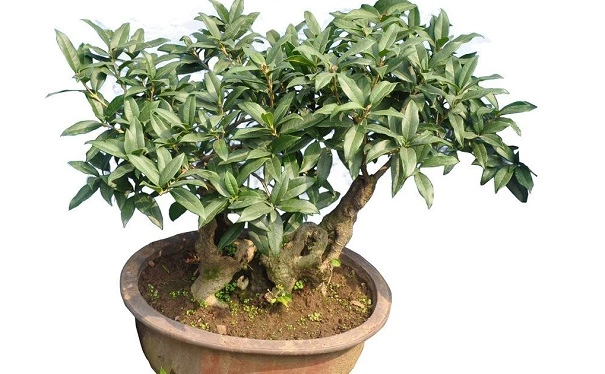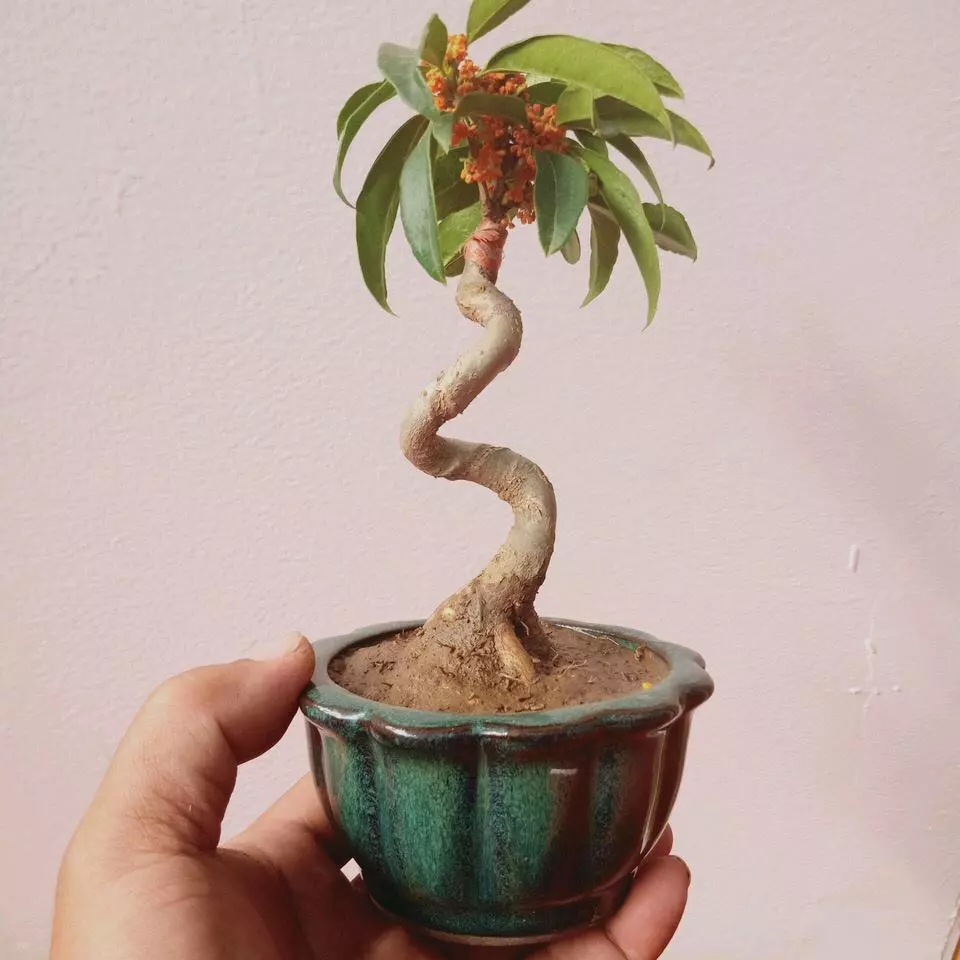How To Grow Tea Olive Tree In Container?
Written by Ivy
Nov 19 2022

Many people don't know much about the technology of grow tea olive tree in container. Many home lovers are growing tea olive tree in container indoors, but the survival rate is very low or they can't plant the desired effect.
In fact, growth tea olive tree in container is similar to outdoor, mainly to create a suitable growth environment for tea olive tree. To sum up, it is mainly to make corresponding preparations from the aspects of room temperature control, soil quality, daylighting, plant nutrition, pruning and cutting technology, and firmly control its growth environment, otherwise there will be a series of problems such as non flowering and wilting.
For example, the sandy soft soil should be selected as the soil of tea olive tree, and the daylighting should be appropriate. However, it should be noted that the direct strong light irradiation time in summer is not too long. The fertilizer is mainly phosphorus fertilizer and potassium fertilizer, and its nutrition can be concentrated and developed through pruning. All these directly affect the growth of tea olive tree potted plants.
Tea olive tree in container is different from outdoor. It has less vitality than outdoor trees, so we should try our best to meet it in terms of environment and nutrition. Only by mastering this tea olive tree in container technology can indoor potted plants grow better.
Read More:
How To Prune Tea Olive Tree?
Read More:
How To Propagate Tea Olive Tree?
In fact, growth tea olive tree in container is similar to outdoor, mainly to create a suitable growth environment for tea olive tree. To sum up, it is mainly to make corresponding preparations from the aspects of room temperature control, soil quality, daylighting, plant nutrition, pruning and cutting technology, and firmly control its growth environment, otherwise there will be a series of problems such as non flowering and wilting.
For example, the sandy soft soil should be selected as the soil of tea olive tree, and the daylighting should be appropriate. However, it should be noted that the direct strong light irradiation time in summer is not too long. The fertilizer is mainly phosphorus fertilizer and potassium fertilizer, and its nutrition can be concentrated and developed through pruning. All these directly affect the growth of tea olive tree potted plants.
Tea olive tree in container is different from outdoor. It has less vitality than outdoor trees, so we should try our best to meet it in terms of environment and nutrition. Only by mastering this tea olive tree in container technology can indoor potted plants grow better.
Read More:
How To Prune Tea Olive Tree?
Selection of Container
All kinds of containers used to cultivate tea olive tree are collectively called flower pots. Tea olive tree flowerpots have a variety of shapes, textures, specifications and types. According to the physiological characteristics of tea olive tree, it is best to use tile pots for tea olive tree cultivation. Its size should match the plant type of tea olive tree, neither too large nor too small. Some people often plant small tea olive trees in large pots in order to make tea olive trees grow as soon as possible. As a result, tea olive tree not only can not grow vigorously, but also leads to the death of tea olive tree in serious cases. Because a large basin has more soil, more soil and more water, and tea olive tree is small, the root system is not easy to breathe and water, and it is easy to rot.
Selection of ContainerPreparation of Container Repotting SoilPropagation mode of potted tea olive treeUpper ContainerRepot FrequencyFrequently Asked Questions About Tea Olive Tree
Preparation of Container Repotting Soil
Culture soil is the material basis for the growth of potted tea olive tree. Its quality is directly related to the growth speed of tea olive tree and the quality of goods. Good culture soil can make tea olive tree grow strong and bright in color. On the contrary, it will be thin and yellow and lose its ornamental value. Therefore, potted tea olive tree must pay attention to the selection and preparation of basin soil.- Composition of culture soil: generally, the soil types commonly used in tea olive tree production include: river sand, garden soil, rotten leaf soil, peat soil, pine needle soil, pond mud, turf soil, swamp soil, etc.
- Preparation principle of culture soil: good aggregate structure. Rich humus. Humus with long-lasting fertilizer effect is the organic matter formed by the decay of animal and plant residues and excreta. The pH (pH value) should be appropriate. First, it is non-toxic and free of diseases and insect pests; second, it has loose texture and good ventilation; third, it can continuously supply the three elements of nitrogen, phosphorus, potassium and other nutrients needed by flowers.
- Preparation proportion of culture soil: the preparation proportion of tea olive tree culture soil is generally 40% of rotten leaf soil, 50% of garden soil and 10% of river sand. It can be adjusted according to the local actual situation.
Propagation mode of potted tea olive tree
There are many ways to reproduce tea olive tree: sowing, branching, layering, cutting and grafting, and one can be selected as needed. The sowing method belongs to sexual reproduction, and several other genera belong to asexual reproduction. If only one or several plants need to be propagated, ramets can be used; Banding or grafting; If you want a small amount of propagation, it is suitable for cutting; If a large number of seedlings are needed, sowing must be used for propagation.Read More:
How To Propagate Tea Olive Tree?
Upper Container
Tea olive tree should be planted in spring. Because tea olive tree has sufficient nutrients in spring, its roots recover and grow quickly, and it is easy to grow new roots and branches after transplanting. Tea olive tree should be transplanted in spring. General steps: basin treatment, hole plugging, basin padding, soil addition, seedling planting, watering, shading and basin serving.Repot Frequency
Generally speaking, the more basin changing times, the more robust tea olive tree grows. The basin of small tea olive tree is changed once a year, the basin of medium tea olive tree is changed once every two years, and the basin of large tea olive tree is changed once every 3-4 years. Of course, it should also be determined according to the growth of tea olive tree. The time for changing pots should be from the beginning of winter to before freezing or from thawing to new bud germination in the next spring.Frequently Asked Questions About Tea Olive Tree
Latest Updated
- Benefits of Bugleweed - 7 Science-backed Health Benefits
- Bugleweed Dangers & Side Effects - Is It Poisonous?
- How to Plant Evergreen Trees - What You Should Know
- When to Plant Evergreens - Grow Guide for Evergreen Trees
- 12 Wonderful Evergreen Shrubs for Your Garden
- 12 Popular Evergreen Plants with Pictures for Beginners
- When And How To Prune A Lilac Bush Like a Pro
- How to Grow & Care for Lilac Vine (Hardenbergia Violacea)
- Japanese Lilac Tree (Syringa Reticulata) Care & Propagation Guide
- Shumard Oak Pros and Cons - What to Know
Popular Articles
- Winter maintenance of Antirrhinum Majus
- How to Grow Terminalia Mantaly Tree
- How to Grow and Care for Crossostephium Chinense
- How to grow Antirrhinum Majus in spring
- Peristeria Elata (Dove Orchid) Profile: Info & Care Guide
- Underwatered Snake Plant (Sansevieria Trifasciata) - Signs And How To Fix
- How to Care for Brazilian Jasmine Plant (Mandevilla Sanderi)
- How to Grow & Care for Graptopetalum Purple Delight in Summer
- Rosa Chinensis (China Rose): Plant Growing & Care Tips
- How to Care for Baby Sun Rose (Aptenia Cordifolia)